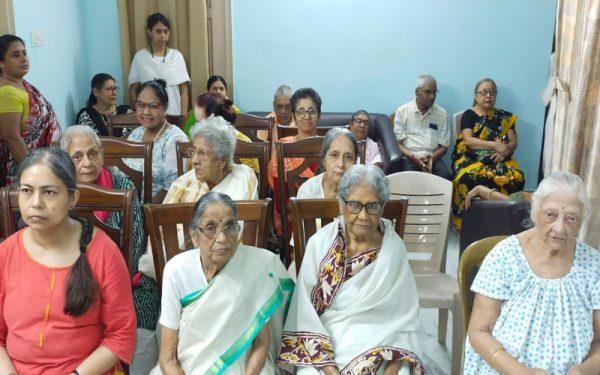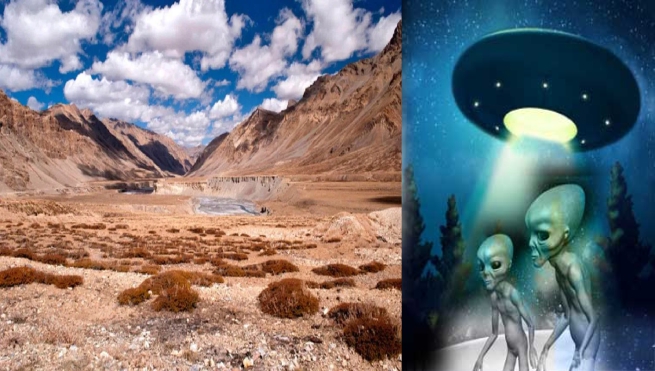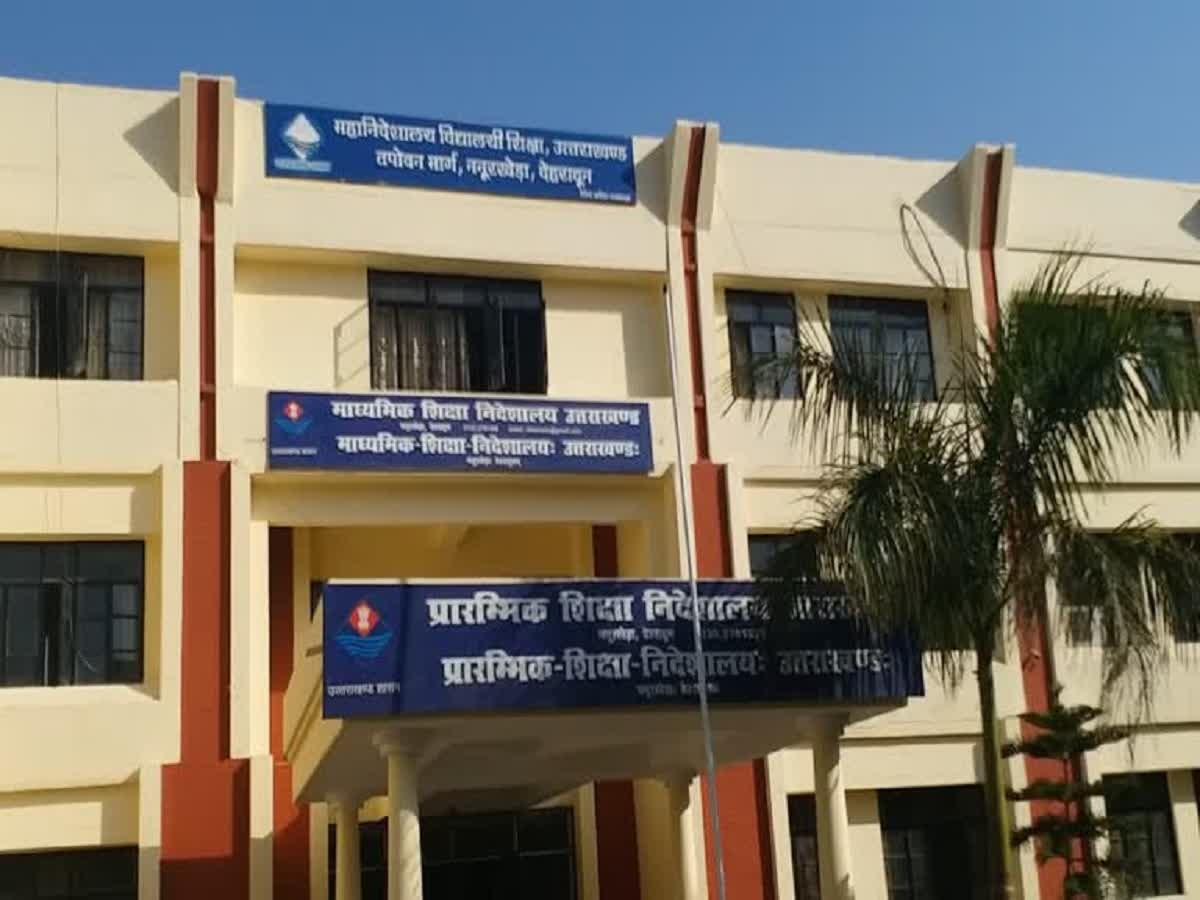दिल्ली का एतिहासिक कुतुब मीनार तो आपने देखा ही होगा, जिसे ईंट से बनी दुनिया की सबसे ऊंची मीनार माना जाता है। इसी कुतुब मीनार के पास ही एक विशाल स्तंभ भी है, जिसे ‘लौह स्तंभ’ कहा जाता है। इसके बारे में बहुत कम ही लोग जानते होंगे, लेकिन इसका इतिहास बहुत पुराना है और यह स्तंभ रहस्यों से भरा हुआ भी है। माना जाता है कि यह स्तंभ 1600 साल से भी पुराना है। इसकी सबसे बड़ी खासियत ये है कि यह शुद्ध लोहे से बना हुआ है और सदियों से खुले आसमान के नीचे खड़ा है, लेकिन आजतक इसपर कभी जंग नहीं लगा। यह अपने आप में एक बहुत बड़ा रहस्य है। Iron Pillar Delhi/Unsolved Mystery/Namaskar City Roorkee

माना जाता है कि इस लौह स्तंभ का निर्माण राजा चंद्रगुप्त विक्रमादित्य (राज 375-412) ने कराया है और इसका पता उसपर लिखे लेख से चलता है, जो गुप्त शैली का है। हालांकि कुछ विशेषज्ञों का मानना है कि इसका निर्माण उससे बहुत पहले किया गया था, संभवत: 912 ईसा पूर्व में। इसके अलावा कुछ इतिहासकार तो यह भी मानते हैं कि यह स्तंभ सम्राट अशोक का है, जो उन्होंने अपने दादा चंद्रगुप्त मौर्य की याद में बनवाया था। Iron Pillar Delhi/Unsolved Mystery/Namaskar City RoorkeeRoorkee
इस स्तंभ पर संस्कृत में जो लेख खुदा हुआ है,उसके मुताबिक इसे ध्वज स्तंभ के रूप में खड़ा किया गया था। माना जाता है कि मथुरा में विष्णु पहाड़ी पर निर्मित भगवान विष्णु के मंदिर के सामने इसे खड़ा किया गया था, जिसे 1050 ईस्वी में तोमर वंश के राजा और दिल्ली के संस्थापक अनंगपाल ने दिल्ली लाया। Iron Pillar Delhi/Unsolved Mystery/Namaskar City Roorkee
शुद्ध लोहे से बने इस स्तंभ की ऊंचाई सात मीटर से भी ज्यादा है जबकि वजन 6000 किलो से भी अधिक है। रासायनिक परीक्षण से पता चला है कि इस स्तंभ का निर्माण गर्म लोहे के 20-30 किलो के कई टुकड़ों को जोड़ कर किया गया है, लेकिन सबसे बड़ा सवाल ये है कि करीब 1600 साल पहले गर्म लोहे के टुकड़ों को जोड़ने की तकनीक क्या इतनी विकसित थी, क्योंकि उन टुकड़ों को इस तरीके से जोड़ा गया है कि पूरे स्तंभ में एक भी जोड़ दिखाई नहीं देता। यह सच में एक बड़ा रहस्य है। Iron Pillar Delhi/Unsolved Mystery/Namaskar City Roorkee
इस लौह स्तंभ में सबसे आश्चर्य की बात है इसमें जंग का न लगना। माना जाता है कि स्तंभ को बनाते समय इसमें फास्फोरस की मात्रा अधिक मिलाई गई थी, इसीलिए इसमें आज तक जंग नहीं लगा। दरअसल, फास्फोरस से जंग लगी वस्तुओं को साफ किया जाता है, क्योंकि जंग इसमें घुल जाता है। लेकिन सोचने की बात ये है कि फास्फोरस की खोज तो 1669 ईस्वी में हैम्बुर्ग के व्यापारी हेनिंग ब्रांड ने की थी जबकि स्तंभ का निर्माण उससे करीब 1200 साल पहले किया गया था। तो क्या उस समय के लोगों को फास्फोरस के बारे में पता था? अगर हां, तो इसके बारे में इतिहास की किसी भी किताब में कोई जिक्र क्यों नहीं मिलता? ये सारे सवाल स्तंभ के रहस्य को और गहरा देते हैं।
Iron pillar of Delhi
———————–
The iron pillar of Delhi is a structure 7.21 metres (23 feet 8 inches) high with a 41-centimetre (16 in) diameter that was constructed by Chandragupta II (reigned c. 375–415 CE), and now stands in the Qutb complex at Mehrauli in Delhi, India. The metals used in its construction have a rust-resistant composition. The pillar weighs more than six tonnes and is thought to have been erected elsewhere, perhaps outside the Udayagiri Caves, and moved to its present location by Anangpal Tomar in 11th century.
Iron Pillar Delhi/Unsolved Mystery/Namaskar City Roorkee
Physical description
The iron pillar stands within the courtyard of Quwwat-ul-Islam Mosque
The height of the pillar, from the top to the bottom of its base, is 7.21 m (23 ft 8 in), 1.12 m (3 ft 8 in) of which is below ground. Its bell pattern capital is 306 mm (12 in). It is estimated to weigh more than six tonnes (13,228 lb). The pillar has attracted the attention of archaeologists and materials scientists because of its high resistance to corrosion and has been called a “testimony to the high level of skill achieved by the ancient Indian iron smiths in the extraction and processing of iron”.The corrosion resistance results from an even layer of crystalline iron(III) hydrogen phosphate hydrate forming on the high-phosphorus-content iron, which serves to protect it from the effects of the Delhi climate. Iron Pillar Delhi/Unsolved Mystery/Namaskar City Roorkee
Inscriptions
The pillar carries a number of inscriptions of different dates, some of which have not been studied systematically despite the pillar’s prominent location and easy accessInscription of King Chandra or Chandragupta II Iron Pillar Delhi/Unsolved Mystery/Namaskar City Roorkee
Detail showing the inscription of King Chandragupta II
The oldest inscription on the pillar is that of a king named Chandra (IAST: Candra), generally identified as the Gupta emperor Chandragupta II. Iron Pillar Delhi/Unsolved Mystery/Namaskar City Roorkee
Inscription
The inscription covers an area of 2′9.5″× 10.5″(65.09 cm x 26.67 cm). The ancient writing is preserved well because of the corrosion-resistant iron on which it is engraved. However, during the engraving process, iron appears to have closed up over some of the strokes, making some of the letters imperfect Iron Pillar Delhi/Unsolved Mystery/Namaskar City Roorkee
It contains verses composed in Sanskrit language, in shardulvikridita metre. It is written in the eastern variety of the Gupta script. The letters vary from 0.3125″ to 0.5″ in size, and resemble closely to the letters on the Allahabad Pillar inscription of Samudragupta. However, it had distinctive mātrās (diacritics), similar to the ones in the Bilsad inscription of Kumaragupta I.[10] While the edges of the characters on the Allahabad inscription are more curved, the ones on the Delhi inscription Iron Pillar Delhi/Unsolved Mystery/Namaskar City Roorkee
have more straight edges. This can be attributed to the fact that the Allahabad inscription was inscribed on softer sandstone, while the Delhi inscription is engraved on the harder material (iron). The text has some unusual deviations from the standard Sanskrit spelling, such as Iron Pillar Delhi/Unsolved Mystery/Namaskar City Roorkee
Original location
The pillar was installed as a trophy in building the Quwwat-ul-Islam mosque and the Qutb complex by Sultan Iltutmish in the 13th century.Its original location, whether on the site itself or from elsewhere, is debated. Iron Pillar Delhi/Unsolved Mystery/Namaskar City Roorkee
According to the inscription of king Chandra, the pillar was erected at Vishnupadagiri (Vishnupada). J. F. Fleet (1898) identified this place with Mathura, because of its proximity to Delhi (the find spot of the inscription) and the city’s reputation as a Vaishnavite pilgrimage centre. However, archaeological evidence indicates that during the Gupta period, Mathura was a major centre of Buddhism, although Vaishnavism may have existed there. Moreover, Mathura lies in plains, and only contains some small hillocks and mounds: there is no true giri (hill) in Mathura. Iron Pillar Delhi/Unsolved Mystery/Namaskar City Roorkee
Based on paleographic similarity to the dated inscriptions from Udayagiri, the Gupta-era iconography, analysis of metallurgy and other evidence, Meera Dass and R. Balasubramaniam (2004) theorized that the iron pillar was originally erected at Udayagiri. According to them, the pillar, with a wheel or discus at the top, was originally located at the Udayagiri Caves. This conclusion was partly based on the fact that the inscription mentions Vishnupada-giri (IAST: Viṣṇupadagiri, meaning “hill with footprint of Viṣṇu”). This conclusion was endorsed and elaborated by Michael D. Willis in his The Archaeology of Hindu Ritual, published in 2009. Iron Pillar Delhi/Unsolved Mystery/Namaskar City Roorkee
The key point in favour of placing the iron pillar at Udayagiri is that this site was closely associated with Chandragupta and the worship of Vishnu in the Gupta period. In addition, there are well-established traditions of mining and working iron in central India, documented particularly by the iron pillar at Dhar and local place names like Lohapura and Lohangī Pīr (see Vidisha). The king of Delhi, Iltutmish, is known to have attacked and sacked Vidisha in the thirteenth century and this would have given him an opportunity to remove the pillar as a trophy to Delhi, just as the Tughluq rulers brought Asokan pillars to Delhi in the 1300s. Iron Pillar Delhi/Unsolved Mystery/Namaskar City Roorkee
Relocation
It is not certain when the pillar was moved to Delhi from its original location. Alexander Cunningham attributed the relocation to the Tomara king Anangpal, based on the short pillar inscription ascribed to this king. Pasanaha Chariu, an 1132 CE Jain Apabhramsha text composed by Vibudh Shridhar, states that “the weight of his pillar caused the Lord of the Snakes to tremble”. The identification of this pillar with the iron pillar lends support to the theory that the pillar was already in Delhi during Anangpal’s reign. Iron Pillar Delhi/Unsolved Mystery/Namaskar City Roorkee
Another theory is that the relocation happened during the Muslim rule in Delhi. Some scholars have assumed that it happened around 1200 CE, when Qutb al-Din Aibak commenced the construction of the Qutb complex as a general of Muhammad of Ghor. Iron Pillar Delhi/Unsolved Mystery/Namaskar City Roorkee
Finbarr Barry Flood (2009) theorizes that it was Qutb al-Din’s successor Iltutmish (r. 1210–1236 CE), who moved the pillar to Delhi.According to this theory, the pillar was originally erected in Vidisha and that the pillar was moved to the Qutb complex, by Iltutmish when he attacked and sacked Vidisha in the thirteenth century. Iron Pillar Delhi/Unsolved Mystery/Namaskar City Roorkee
Scientific analysis
Details of the top of iron pillar, Qutb Minar, Delhi.
The iron pillar in India was produced by the forge welding of pieces of wrought iron. In a report published in the journal Current Science, R. Balasubramaniam of the IIT Kanpur explains how the pillar’s resistance to corrosion is due to a passive protective film at the iron-rust interface. The presence of second-phase particles (slag and unreduced iron oxides) in the microstructure of the iron, that of high amounts of phosphorus in the metal, and the alternate wetting and drying existing under atmospheric conditions are the three main factors in the three-stage formation of that protective passive film. Iron Pillar Delhi/Unsolved Mystery/Namaskar City Roorkee
Lepidocrocite and goethite are the first amorphous iron oxyhydroxides that appear upon oxidation of iron. High corrosion rates are initially observed. Then, an essential chemical reaction intervenes slag and unreduced iron oxides (second phase particles) in the iron microstructure alter the polarisation characteristics and enrich the metal–scale interface with phosphorus, thus indirectly promoting passivation of the iron[39] (cessation of rusting activity). Iron Pillar Delhi/Unsolved Mystery/Namaskar City Roorkee
The second-phase particles act as a cathode, and the metal itself serves as anode, for a mini-galvanic corrosion reaction during environment exposure. Part of the initial iron oxyhydroxides is also transformed into magnetite, which somewhat slows down the process of corrosion. The ongoing reduction of lepidocrocite and the diffusion of oxygen and complementary corrosion through the cracks and pores in the rust still contribute to the corrosion mechanism from atmospheric conditions. Iron Pillar Delhi/Unsolved Mystery/Namaskar City Roorkee
The iron pillar in Qutb Minar
The next main agent to intervene in protection from oxidation is phosphorus, enhanced at the metal–scale interface by the same chemical interaction previously described between the slags and the metal. The ancient Indian smiths did not add lime to their furnaces. The use of limestone as in modern blast furnaces yields pig iron that is later converted into steel; in the process, most phosphorus is carried away by the slag. Iron Pillar Delhi/Unsolved Mystery/Namaskar City Roorkee
The absence of lime in the slag and the use of specific quantities of wood with high phosphorus content (for example, Cassia auriculata) during the smelting induces a higher phosphorus content (> 0.1%, average 0.25%) than in modern iron produced in blast furnaces (usually less than 0.05%). This high phosphorus content and particular repartition are essential catalysts in the formation of a passive protective film of misawite (d-FeOOH), an amorphous iron oxyhydroxide that forms a barrier by adhering next to the interface between metal and rust. Misawite, the initial corrosion-resistance agent, was thus named because of the pioneering studies of Misawa and co-workers on the effects of phosphorus and copper and those of alternating atmospheric conditions in rust formation. Iron Pillar Delhi/Unsolved Mystery/Namaskar City Roorkee
The most critical corrosion-resistance agent is iron hydrogen phosphate hydrate (FePO4-H3PO4-4H2O) under its crystalline form and building up as a thin layer next to the interface between metal and rust. Rust initially contains iron oxide/oxyhydroxides in their amorphous forms. Due to the initial corrosion of metal, there is more phosphorus at the metal–scale interface than in the bulk of the metal. Alternate environmental wetting and drying cycles provide the moisture for phosphoric-acid formation. Over time, the amorphous phosphate is precipitated into its crystalline form (the latter being therefore an indicator of old age, as this precipitation is a rather slow happening). The crystalline phosphate eventually forms a continuous layer next to the metal, which results in an excellent corrosion resistance layer. In 1,600 years, the film has grown just one-twentieth of a millimetre thick. Iron Pillar Delhi/Unsolved Mystery/Namaskar City Roorkee
In 1969, in his first book, Chariots of the Gods?, Erich von Däniken cited the absence of corrosion on the Delhi pillar and the unknown nature of its creation as evidence of extraterrestrial visitation. When informed by an interviewer, in 1974, that the column was not in fact rust-free, and that its method of construction was well-understood, von Däniken responded that he no longer considered the pillar or its creation to be a mystery. Balasubramaniam states that the pillar is “a living testimony to the skill of metallurgists of ancient India”. An interview with Balasubramaniam and his work can be seen in the 2005 article by the writer and editor Matthew Veazey. Further research published in 2009 showed that corrosion has developed evenly over the surface of the pillar. Iron Pillar Delhi/Unsolved Mystery/Namaskar City Roorkee
It was claimed in the 1920s that iron manufactured in Mirjati near Jamshedpur is similar to the iron of the Delhi pillar.Further work on Adivasi (tribal) iron by the National Metallurgical Laboratory in the 1960s did not verify this claim. Iron Pillar Delhi/Unsolved Mystery/Namaskar City Roorkee
Evidence of a cannonball strike
Upper half of pillar, demonstrating horizontal fissuring thought to be caused by cannonball strike
A significant indentation on the middle section of the pillar, approximately 4 m (13 ft) from the current courtyard ground level, has been shown to be the result of a cannonball fired at close range.The impact caused horizontal fissuring of the column in the area diametrically opposite to the indentation site, but the column itself remained intact. While no contemporaneous records, inscriptions, or documents describing the event are known to exist, historians generally agree that Nadir Shah is likely to have ordered the pillar’s destruction during his invasion of Delhi in 1739, as he would have considered a Hindu temple monument undesirable within an Islamic mosque complex. Alternatively, he may have sought to dislodge the decorative top portion of the pillar in search of hidden precious stones or other items of value.
No additional damage attributable to cannon fire has been found on the pillar, suggesting that no further shots were taken. Historians have speculated that ricocheting fragments of the cannonball may have damaged the nearby Quwwat-ul-Islam mosque, which suffered damage to its southwestern portion during the same period, and the assault on the pillar might have been abandoned as a result. Iron Pillar Delhi/Unsolved Mystery/Namaskar City Roorkee
Article copied
Edited by Namaskar Team Roorkee













